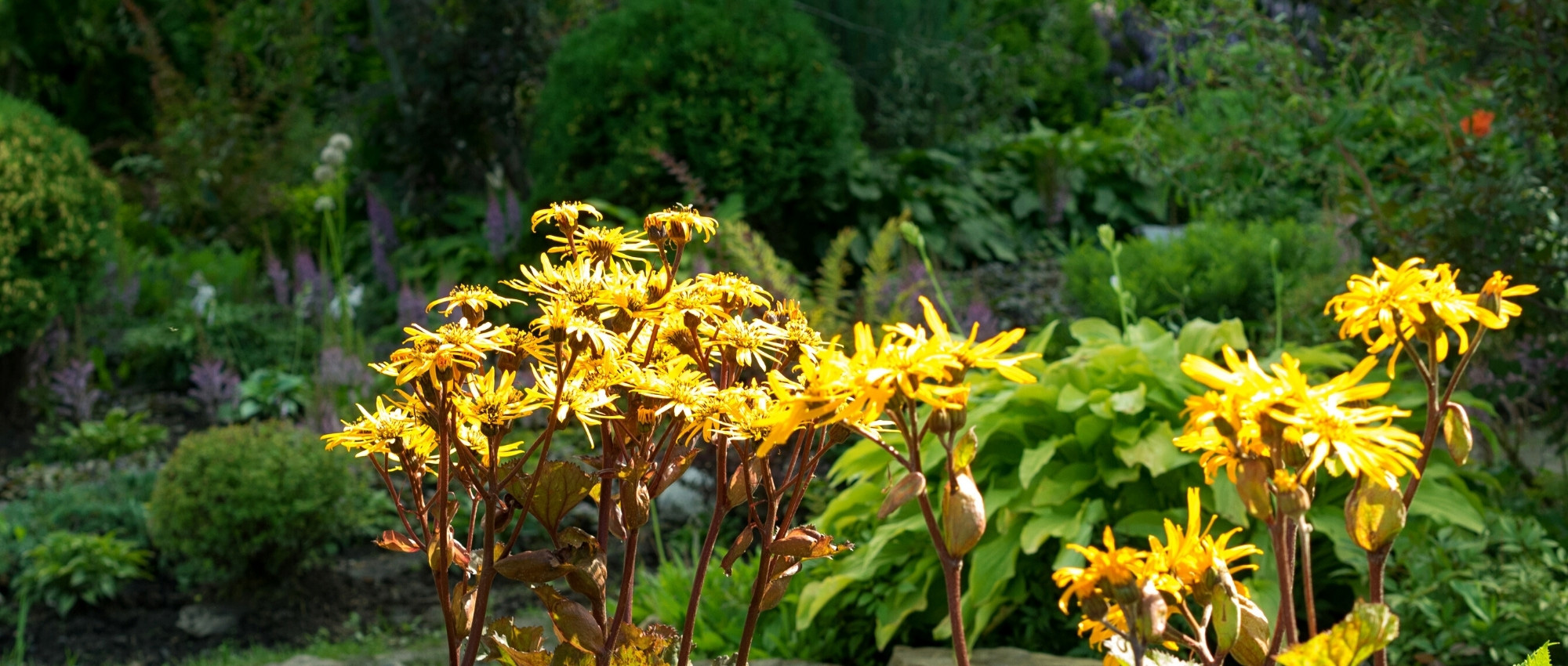
Ligularia: 5 Companion Planting Ideas
Our ideas for creating harmonious and colourful flower beds!
Contents
Ligularias are impressive perennials with bright, vivid yellow flowering and generous foliage. They bloom between July and September-October, producing flowers in clusters (like daisies), in yellow or orange hues. Some species, such as Ligularia przewalskii, feature upright and slender flower clusters. Ligularias also have large, rounded or palmate leaves, typically dark green, sometimes purple (Ligularia ‘Pandora’, ‘Dark Beauty’…).
Ligularias thrive in shade and adapt well to heavy, clayey, and moist soils. They are relatively easy to grow, robust, and hardy plants. Discover our finest ideas and inspirations for pairing them and creating stunning borders.
For everything you need to know about their cultivation, feel free to check out our sheet “Ligularia: to plant, to grow, and to care for”, as well as our guide to choosing a ligularia.
By the pond edge
As ligularias thrive in cool, moist soils that do not dry out in summer, they are ideal for dressing the edges of ponds and waterways alongside other bank plants. For example, pair them with gunneras, Japanese iris, Asian primroses, and lysimachias (whose yellow flowers will echo those of the ligularias). Also consider the graphic and generous foliage of ferns, such as Matteuccia struthiopteris or osmunda! Opt for plants with light and airy flowering alongside them, such as Veronicastrums, eupatoriums, fireweeds, and willowherbs: this will give your garden a very natural and wild atmosphere!

Ligularia stenocephala (photo Salicyna), Epilobium angustifolium ‘Album’, Iris ensata ‘Meteor’, Matteuccia struthiopteris (photo Ryan Somma), and Filipendula ulmaria (photo Andreas Rockstein)
In a woodland garden
Ligularias thrive in shade or partial shade: they will easily find their place in a woodland garden, creating a cool and natural atmosphere. They will beautifully complement the decorative foliage of hostas, ferns, brunneras, and Hakonechloa. Add small touches of colour with the flowering of foxgloves, Geranium nodosum, and astilbes. Also, enjoy the splendid starry flowering of astrances! For a slightly later bloom, you can incorporate Japanese anemones and Tricyrtis. This way, you will recreate the very soothing atmosphere of a forest, but with a bit more flowers!
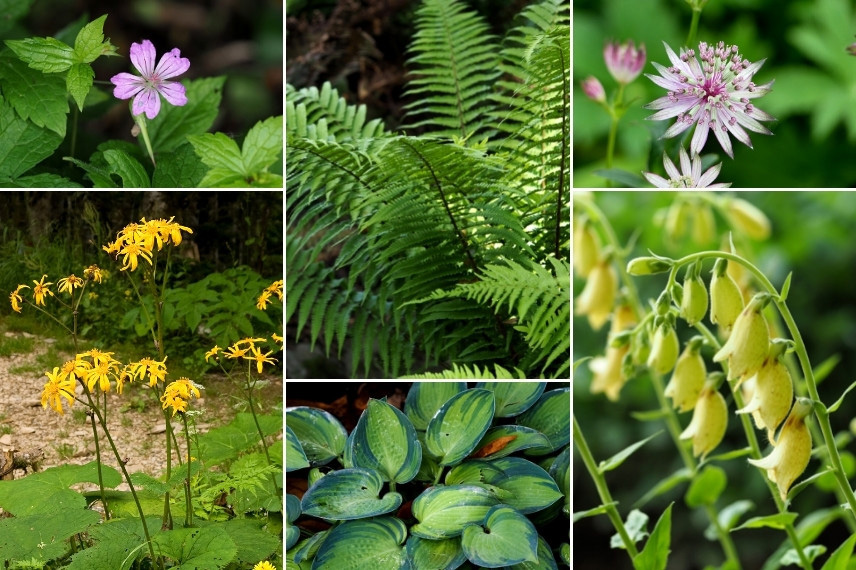
Geranium nodosum, Dryopteris wallichiana, Astrantia major ‘Ruby Star’, Ligularia dentata, Hosta ‘June’, and Digitalis grandiflora
Discover other Ligularia
View all →Available in 1 sizes
Available in 1 sizes
Available in 1 sizes
Available in 1 sizes
Available in 1 sizes
Available in 2 sizes
Available in 1 sizes
Available in 1 sizes
Available in 1 sizes
Available in 1 sizes
In a bed of warm colours
Pair ligularia with other summer-flowering perennials to create a bed or border in warm tones. Focus on yellow, orange, and red blooms. Consider, for example, Lobelia laxiflora, Persicaria amplexicaulis, Schizostylis coccinea, and daylilies. Also incorporate purple foliage, such as Persicaria ‘Red Dragon’, Euphorbia amygdaloides ‘Purpurea’, Lysimachia ‘Fire Cracker’, and Canna ‘Durban’. You will achieve a very bright and vibrant bed! This style of planting is more suited to large spaces: in small gardens, red and orange tones can make the area feel cramped, so it’s better to opt for softer shades and combinations.
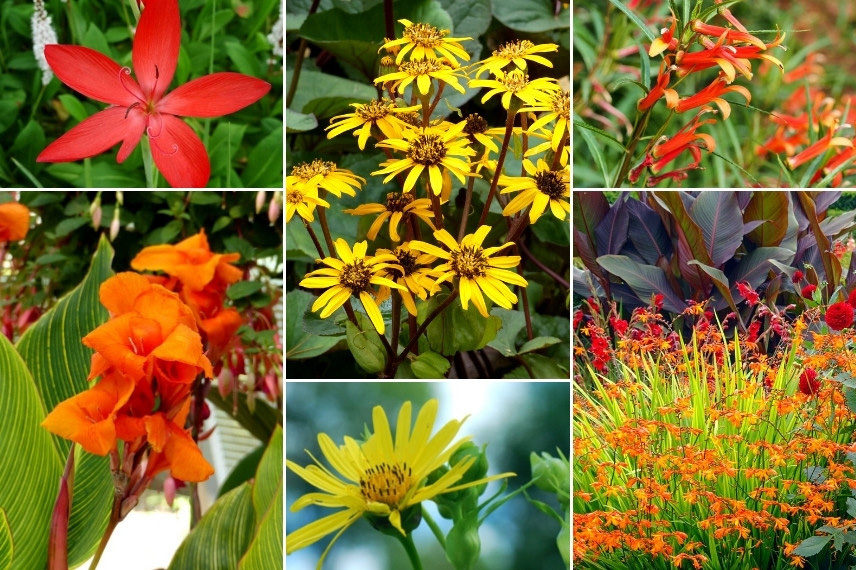
Schizostylis coccinea ‘Major’, Ligularia dentata ‘Britt Marie Crawford’, Lobelia laxiflora, Canna striata, Silphium laciniatum, scene with Crocosmia ‘Rheingold’, canna, dahlias, and gladioli (photo iBulb)
In a jungle garden
Ligularias are impressive plants with large leaves: take advantage of them to create a jungle garden by pairing them with other plants featuring lush foliage! We particularly recommend Ligularia stenocephala, Ligularia ‘Gregynog Gold’, or Ligularia wilsoniana, which reach heights of between 1.8 m and 2 m. Plant alongside giant hostas (for example, ‘Empress Wu’ or ‘Jurassic Park’), Petasites japonicus ‘Giganteus’, Astilboides tabularis, and Gunnera manicata. Play with contrasts by opposing the wide, rounded leaves with the finely cut foliage of Datisca cannabina. Don’t hesitate to add height with palms, banana plants Musa basjoo, bamboos, and Persicaria polymorpha.
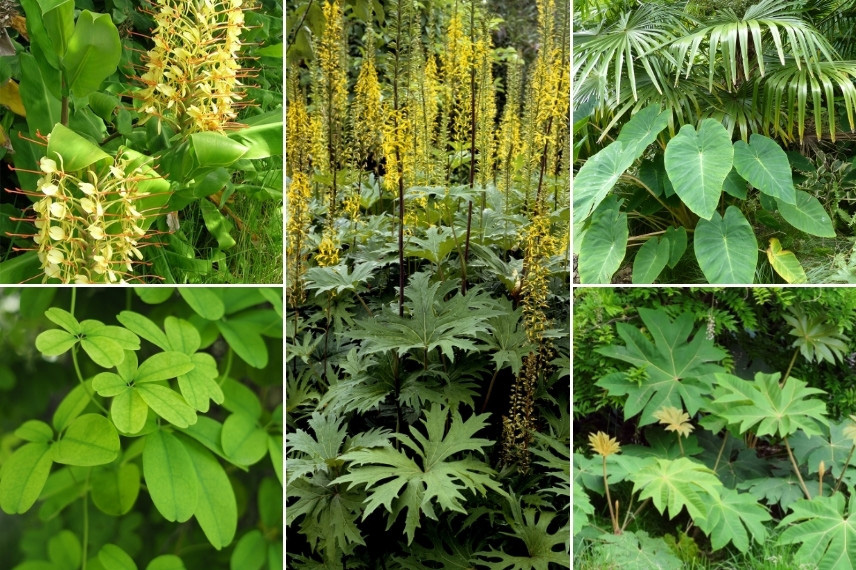
Hedychium gardnerianum, Ligularia przewalskii, Colocasia esculenta, and Trachycarpus fortunei, Akebia quinata, Tetrapanax papyrifera ‘Rex’
To play with contrasts
Ligularia offers very bright yellow flowers, take advantage of them to create stunning contrasts that will highlight them. We particularly recommend varieties of ligularia with purple foliage, such as Ligularia dentata ‘Britt Marie Crawford’. This way, you can create a beautiful yellow and purple scene, relying on the dark foliage of the Ophiopogon planiscapus ‘Nigrescens’, the heuchera ‘Velvet Night’, Cotinus ‘Grace’, and Physocarpus ‘Midnight’. In contrast, bring brightness alongside the ligularia flowers with the golden yellow foliage of the Hakonechloa macra ‘Aureola’, Hydrangea ‘Little Honey’, and Sambucus racemosa ‘Lemon Lace’. You will achieve an impressive scene that catches the eye and leaves a lasting impression!
You can also play with complementary colours, by pairing shades that are opposite on the colour wheel: this way, they enhance each other and stand out. Ligularia offers yellow flowers, so they should be paired with purple flowers, their complementary shade on the colour wheel.
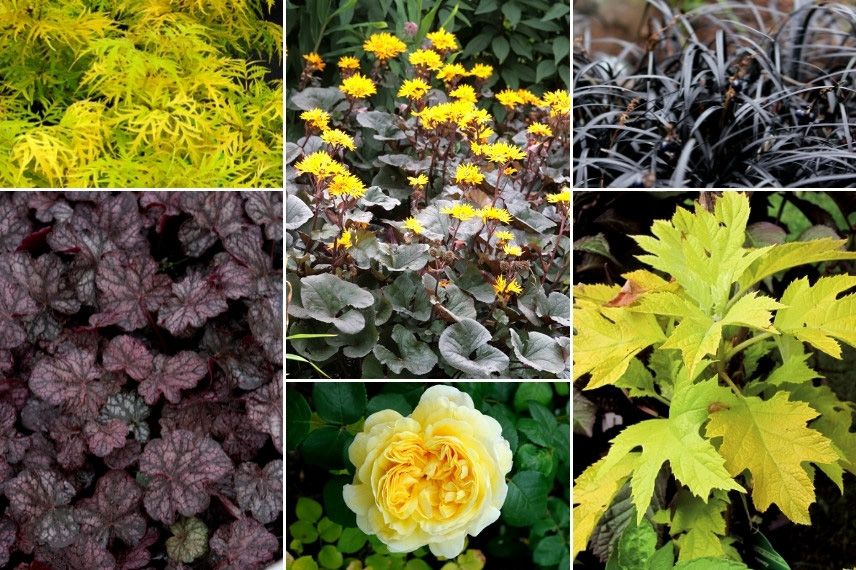
Sambucus racemosa ‘Lemon Lace’, Ligularia dentata ‘Britt Marie Crawford’, Ophiopogon planiscapus ‘Nigrescens’, Heuchera ‘Velvet Night’, Rose ‘Charles Darwin’, and Hydrangea quercifolia ‘Little Honey’
- Subscribe!
- Contents

































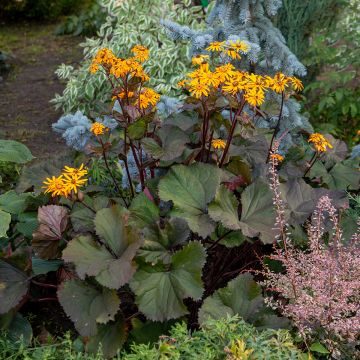

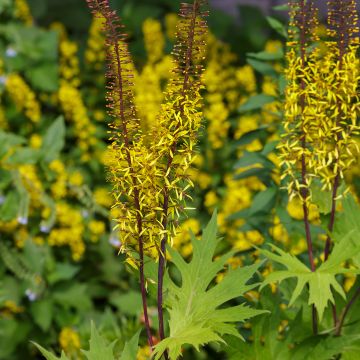

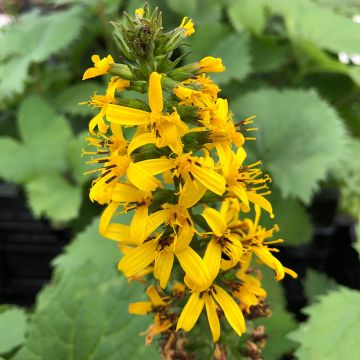
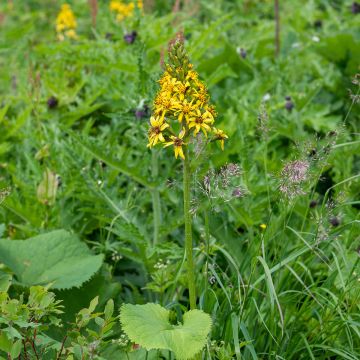



Comments